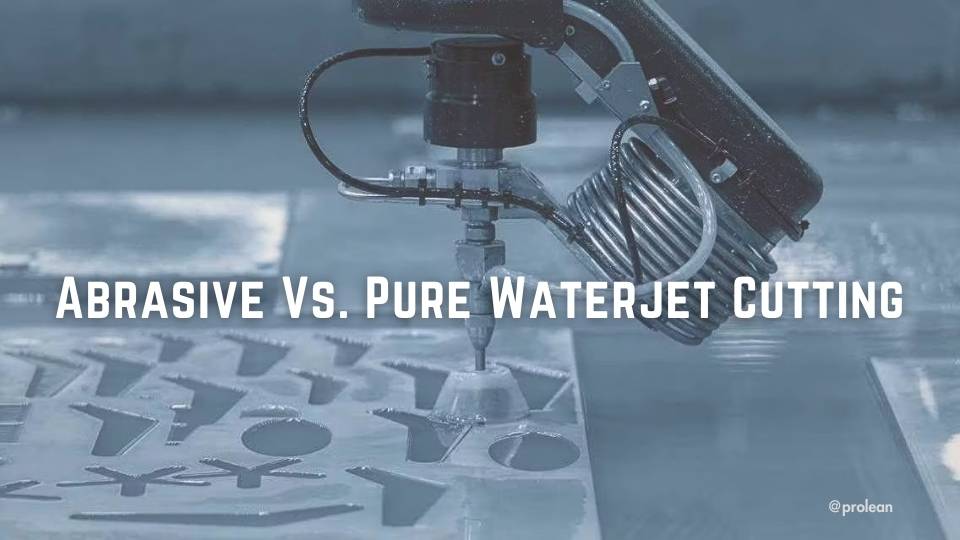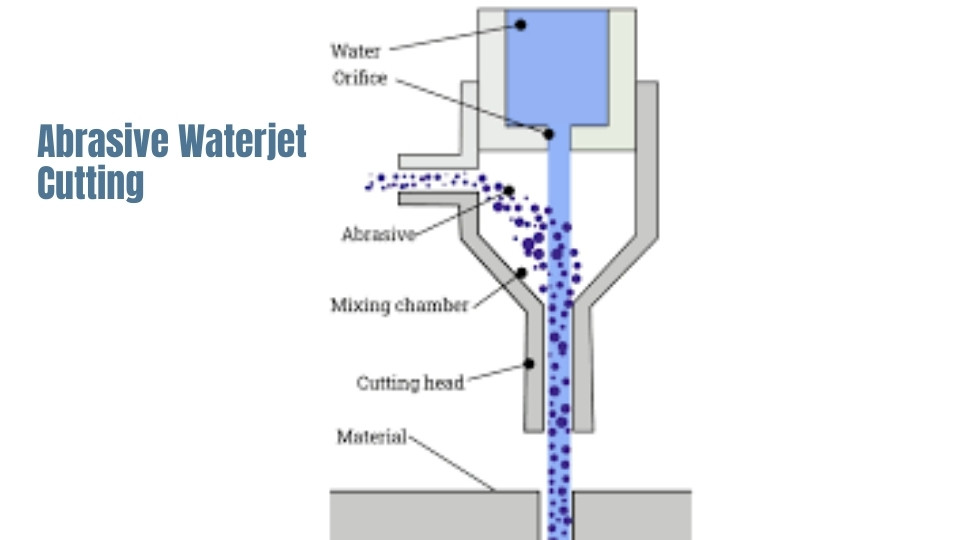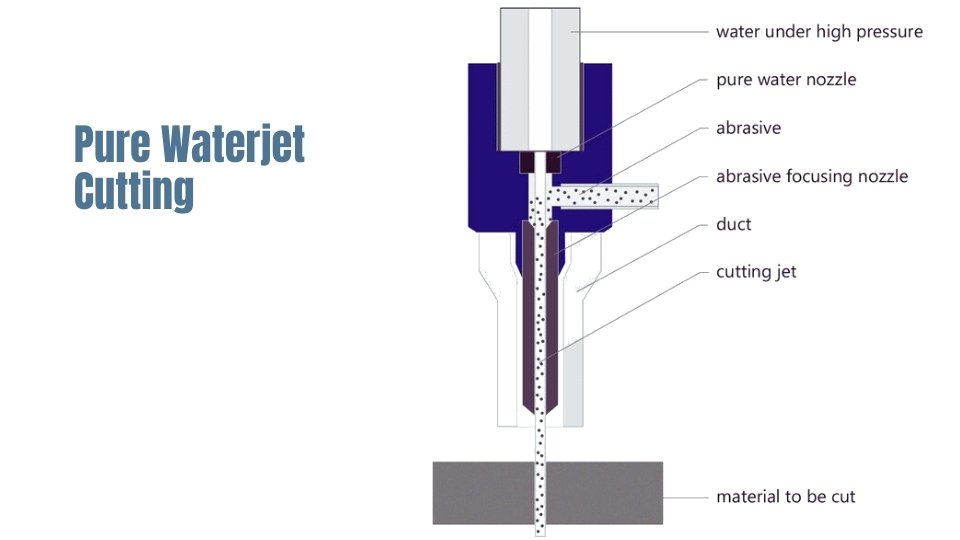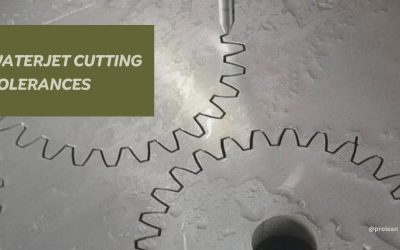
A water jet cutter or a water jet is a contemporary machining tool. This machine shapes several materials through the forceful water spray at high pressure. This water may be reinforced with abrasive means to enhance the slashing efficiency of the slurry.
Cutting with the help of water jets is divided into pure water jet cutting where only water streams are used. While in abrasive water jet machining, water is mixed with an abrasive material is added to the water stream.
These cutting processes are widely used in the automotive and manufacturing industries. Water jet cutting is suitable for heat-sensitive materials, including aluminum, steel, and plastics.
Water jet cutting is on the fast rise today in many industries as the best cutting technique. Such industries as aerospace, manufacturing, and fabrication industries together with mining industries are some of the reasons for its flexibility and efficiency.
Abrasive Waterjet Cutting

Abrasive Waterjet Cutting
Water jet cutting is an efficient way of cutting sheet metal. It employs a high-pressure stream of water with abrasive material, usually garnet. The abrasive particles enable the operator to make fine, clean cuts right through thick stock. Therefore, preferable when waterjet design is complex or thin-walled. It can also cut other materials apart from sheet metal such as ceramics, composites, stone, and glass. As a result, it can be applied in aerospace; automobile; and manufacturing industries.
Try Prolean Now!
Benefits of Abrasive WaterJet Cutting
The benefits of abrasive waterjet cutting in sheet metal cutting.
- Material Utility: As with the waterjet cutting, the abrasive waterjet cutting is capable of cutting through a wider list of materials.
- Thickness Capability: Abrasive waterjet cutters can easily cut through materials with an inch thickness, beyond those used in normal operations
- Precision and Accuracy: it is beneficial to introduce the abrasive particles to increase the accuracy of cutting, which is cleaner and more accurate.
Drawbacks of AWJ Sheet Metal Cutting
- Abrasive Consumption and Cleanup: The abrasive particles are erodible, and thus need to be cleaned and recycled. This results in further work and time.
- Equipment Wear and Maintenance: The abrasive particles generate more wear on the equipment which means, the equipment needs a lot of maintenance. Thus, results in high overall maintenance costs.
Pure Waterjet Cutting

Pure waterjet cutting
A type of waterjet cutting devoid of any added abrasives involves the use of a high-pressure water stream to cut materials. Pure waterjet cutting is most appropriate on softer materials such as foam, elastic, plastics, and specialty metals. Such stages comprise the pressurization of water and the directing of the same through a small opening. It generates an exceptionally precise stream, aiding highly accurate cutting with superior precision. Pure waterjet cutting is applied in aerospace industries, automotive industries, and manufacturing industries. (Learn more about what is water jet cutting).
Benefits of Using a Pure Water Jet Cutting
The following are the benefits of using a pure water jet on sheet metal cutting:
- Minimal Material Change: Lack of abrasive particles means, less material erosion. The surface of the joint must have to be smooth.
- No Abrasive Utilization: Since no abrasives are used, it is cost-effective in terms of the consumption of the materials used.
- Reduced Wear and Tear on Equipment: Consequently, equipment that does not come into contact with abrasives has a longer service life and lower maintenance expenses.
Pure Waterjet Sheet Metal Limitations
- Limited Material Compatibility: Pure waterjet cutting is not optimal for the harder or thicker material. This restricts it in some sectors.
- Slower Cutting Speeds for Thick Materials: When it comes to using pure waterjet cutting on thick metals, it is relatively slower than the others because it lacks abrasives for clearing the material at high speeds.
Try Prolean Now!
Pure Vs. Abrasive WaterJet Cutting: A comparison
Let’s compare each process based on cutting mechanism, materials, and precision.
Process
There are two types of abrasive waterjet cutting: abrasive cutting and fine grit cutting using sand or garnet grit. The grit is then supplied at high pressure to the cutting head. Eventually, it increases heat and force. High-speed water combined with abrasive material results in a powerful jet that can cut through challenging materials.
However, as will be seen, pure water cutting is different from conventional waterjet cutting. As it does not require abrasives. It uses only the impact and pressure that comes with the force of a water stream, propelled at high speeds. Pure waterjet cutting helps trim material in aspects of metal, stone, or any other hard material without causing damage either to the outer surface or the material structural integrity.
Materials
Many types of material can be cut by abrasive waterjet cutting. The abrasive grit serves a purpose before cutting to reduce the material by grinding it to prevent the gear and operator from getting damaged. However, the cost of replacement of abrasive materials can be significantly high, and with time the machines are fully utilized.
It should however be noted that pure waterjet cutting is not as effective on all materials as it is on metals. However, it is needed to check compatibility for utilization on specific surfaces since it is more rigid than abrasive waterjet cutting.
Precision
Industrial waterjet cutting is a highly precise process utilizing a thin, fast-moving, high-tensile steel wire. It can work on stainless steel and titanium, materials that are usually very hard on tools, and not harm them in the process. This process utilizes high pressures and makes it easy to produce clean cuts especially when cutting thick sections.
Precision in pure waterjet cutting is materialized through a thin high-pressure water jet. This focused waterjet is perfect for cutting complex shapes without damaging the surrounding material and perfect for cutting intricate shapes.
Application
Foil and waterjet cutting is a relatively new technique, used frequently in industries, especially in metalworking. It is often used where there are cutouts on the metal parts to increase strength or decrease their mass. Pure waterjet cutting, in most cases applied in commercial applications. Its usual applications include uses such as cutting stones, concretes, and glasses in situations that may require thin slimmer cuts.
Operation Costs
Water jet cutting is a high-pressure cutting, hence it uses abrasives that wear out frequently. In the long run, the cost of abrasives may increase. The waterjet cutting method operates at its simplest with only pressurized tap water. Therefore has no requirement for consumable abrasives or coolants. This makes it a better option in terms of operation cost.
Materials Cutting by Pure Water Jet Cutting
Water jet cutting is used in its pure form for softer materials that do not require an abrasive.
- Foam
- Rubber
- Acrylics, polycarbonates, or plastics
- Cereals (fruits, vegetables, meats).
Materials Processed by Abrasive WaterJet Cutting
Abrasive waterjet cutting handles the higher and thicker density utilizing more abrasive grain.
- Steel, aluminum, titanium, copper, and other metals.
- Stone (granite, marble)
- Ceramics (tiles)
- Glass (laminated, tempered)
- Fibers (carbon, fiberglass)
Selecting the Right Method for Your Project
How you can make the right decision to go for either abrasive or pure water jet cutting. Let’s discuss;
Material Type and Thickness
The type of material to be cut and the material thickness determines the type of cutting technique to use. Abrasive waterjet cutting is suitable for different materials, mostly for thick ones. But pure waterjet cutting is suitable for softer and delicate materials only.
Surface Finish Requirements
Consider if the coarseness of the surface is relevant to your use case. If a high-quality surface finish is required, then pure waterjet cutting may be the best solution, as the abrasive doesn’t come into contact with the surface of the material, hence no unwanted abrasive marks.
Budgetary Considerations
Consequently, firstly, make an account of the acquisition cost of the equipment and consumables. Secondly, make an analysis of the repetitive cost of using the same, and finally, the cost incurred in maintaining the same. Although in general pure waterjet cutting is considered to have a lower cost of consumables, for some jobs abrasive waterjet cutting might prove to be more efficient.
Application-Specific Needs
Estimate your specific needs and demands of the application in question. Is your project requiring the pliability and strength of the abrasive waterjet cutting or would you prefer the fine cutting accuracy and low material surface finish of the pure water jet cutting?
Try Prolean Now!
Use Cases and Implementation Concerns
Waterjet cutting is used in many fields for accurate material cutting. Both abrasive and pure waterjet methods are useful depending on the material requirements of the work.
Abrasive Waterjet Cutting Applications
Abrasive waterjet cutting is preferred in cutting through highly intense and thicker materials. It’s commonly employed in industries where accuracy and the toughness of the product are the most crucial qualities.
In metal manufacturing, high-pressure waterjet cutting, is suitable for cutting metals of different thicknesses, shapes, and sizes. It is used in aerospace industries to work with hard materials such as titanium, and aluminum as well as advanced composites. Likewise, the automotive industry relies on abrasive waterjets for cutting and profiling metal parts with exceptional accuracy. Besides, this method is widely used in construction, especially in cutting stones and tiles for both – constructional and ornamental uses.
Unmixed/Pure Waterjet Cutting Uses
As for working with softer materials, pure waterjet cutting is the most effective. It’s most suitable when there is a need for a fine surface and little change in the material properties.
Pure waterjet cutting is ideal for applications, do not allow any kind of contact with the material surface being cut. Applications are involved in the food industry to cut thin cross sections on foods that are fragile such as fruits, vegetables, and even meats without necessarily altering the interstructure of the food substance. The pharmaceutical industry also uses pure waterjets for scribing and cutting dosage forms with high accuracy. In addition, this method is used by gasket manufacturers to cut thin and soft materials.
Consult with Experts For Optimal Process Selection
It is essential to contact specialists and find out which water jet machining process will be the most suitable for use. They can advise you depending on the material, thickness requirements, and the particularities of the project.
While abrasive waterjet cutting is more effective on thicker materials and a wider range of substrates it is ideal for industries with diverse cutting requirements. Pure waterjet cutting, on the other hand, boasts of using the least of the material and hence has low consumable costs. Mainly, it’s employed most when finishing is crucial alongside with lower costs.
Thus, your choice should be made considering the material type, thickness, surface finish, and the application of the product. Speaking with waterjet cutting experts allows you to select the appropriate technique depending on the project. At Prolean Tech, we offer you custom waterjet cutting that will match your needs. Consult our team for professional assistance and help in choosing the optimal method for your application.



Interesting breakdown between pure and abrasive waterjet cutting! —how do businesses generally decide when to opt for pure waterjet cutting over abrasive, especially if they work with a mix of materials like plastic, glass, and metal? Does it mostly come down to cost and material thickness, or are there other factors like precision requirements or environmental considerations that influence the choice?
Thank you for your comments! Choosing between pure and abrasive waterjet cutting depends on several factors: Material types, thickness, precision, Cost efficiency, Environmental Impacts etc.